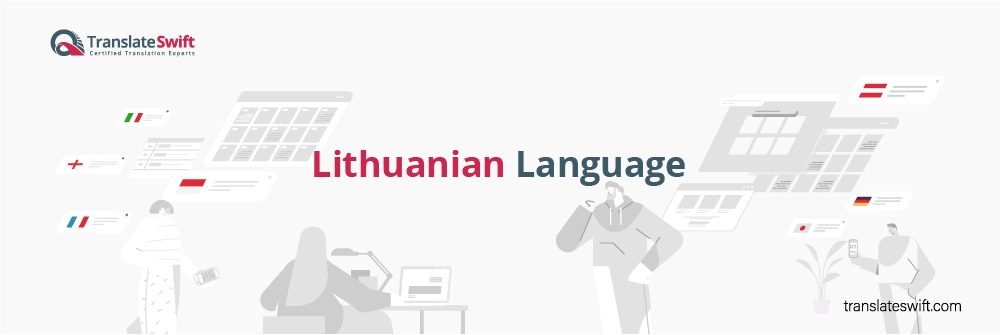
Phonology: A Complex Sound System
Lithuanian language phonology is intricate, featuring a broad range of consonants and vowels. Consonants come in palatalized and non-palatalized varieties, lending depth to pronunciation. Vowels, including long nasal ones, are pivotal for conveying meaning. Orthographic representations accurately reflect these phonetic subtleties. Consonants and vowels undergo palatalization, enriching the language’s sound. Pitch accent further distinguishes pronunciation nuances.
Orthography captures these phonetic intricacies, ensuring precise transcription and pronunciation. Consonants exhibit palatalized and non-palatalized variants, contributing to the language’s unique sound. Vowels, including long nasal ones, play a crucial role in distinguishing meaning. Orthographic representations reflect these phonetic intricacies, ensuring accurate transcription and pronunciation.
Grammar: Intricate Inflectional Patterns
The grammar of Lithuanian is marked by intricate inflectional patterns, particularly evident in noun and adjective declensions. Nouns display a variety of cases, each with distinct endings indicating grammatical function. Verbs exhibit complex conjugation systems, with multiple moods and tenses allowing for nuanced expression. The evolution from Old Lithuanian reveals changes in adjective classes, verb characteristics, and syntax, reflecting the language’s historical development.
Old Lithuanian: Historical Linguistic Features
Old Lithuanian, the language of early writings in the 16th and 17th centuries, retains linguistic features distinct from modern Lithuanian. Adjective classes and remnants demonstrate variations in inflectional patterns. Proto-Indo-European verb characteristics, such as athematic verbs, provide insights into the language’s ancestral roots. Flexible syntax and word order offer a glimpse into historical linguistic structures and conventions.
Vocabulary: Indo-European Roots and Loanwords
Lithuanian vocabulary reflects its Indo-European heritage, with cognates found in classical languages like Sanskrit and Latin. Additionally, the language has incorporated loanwords from Slavic, Germanic, and other sources over time. Recent borrowings from English, particularly in technological terms, highlight ongoing linguistic adaptation and evolution. The preservation and documentation of vocabulary are essential for maintaining cultural heritage and linguistic integrity.
Preservation and Documentation: Comprehensive Resources
Comprehensive resources, including grammars, dictionaries, and linguistic studies, play a vital role in preserving and documenting the Lithuanian language. These resources contribute to the understanding of its grammar, phonology, and vocabulary, fostering linguistic research and scholarship. Furthermore, they serve as repositories of cultural knowledge, reflecting Lithuania’s rich linguistic heritage and national identity.
Continued Evolution: Adaptation and Modernization
Despite its deep historical roots, Lithuanian continues to adapt and modernize, incorporating new technologies and societal changes. Language policies promote the development of equivalent vocabulary to replace loanwords, balancing preservation with linguistic innovation. As a symbol of national unity and identity, Lithuanian remains relevant in contemporary society, reflecting the resilience and pride of its speakers.
The Lithuanian language stands as a testament to the enduring heritage of the Baltic region. Its complex phonology, intricate grammar, and rich vocabulary reflect centuries of linguistic evolution and cultural exchange. As a source of pride and resilience for its speakers, Lithuanian continues to shape national identity and foster cultural expression, ensuring its legacy for generations to come.
Our Tailored Translation Solutions
At TranslateSwift, Ready to explore more languages? Whether you’re learning Lithuanian or discovering new tongues, our platform is your gateway to understanding the world. Start your journey today and unlock the power of communication across borders.
Other Languages
- English
- Spanish
- German
- Dutch
- French
- Italian
- Afrikaans
- Albanian
- Amharic
- Arabic
- Armenian
- Azerbaijani
- Basque
- Belarusian
- Bengali
- Bosnian
- Bulgarian
- Cantonese
- Catalan
- Cebuano
- Chichewa
- Chinese - Simplified
- Chinese - Cantonese
- Chinese - Traditional
- Chinese - Mandarin
- Corsican
- Croatian
- Creole
- Czech
- Danish
- Dari
- Esperanto
- Estonian
- Farsi
- Filipino
- Finnish
- Frisian
- Galician
- Georgian
- Greek
- Gujarati
- Haitian Creole
- Hausa
- Hawaiian
- Hebrew
- Hindi
- Hmong
- Hungarian
- Icelandic
- Igbo
- Indonesian
- Irish
- Japanese
- Javanese
- Kannada
- Kazakh
- Khmer
- Korean
- Kurdish
- Kyrgyz
- Lao
- Latin
- Latvian
- Lithuanian
- Luxembourgish
- Macedonian
- Malagasy
- Malay
- Malayalam
- Maltese
- Maori
- Marathi
- Mongolian
- Montenegrin
- Myanmar
- Nepali
- Norwegian
- Odia
- Pashto
- Persian
- Polish
- Portuguese
- Punjabi
- Romanian
- Russian
- Samoan
- Scots Gaelic
- Serbian
- Sesotho
- Shona
- Sindhi
- Sinhala
- Slovak
- Slovenian
- Somali
- Sundanese
- Swahili
- Swedish
- Tajik
- Tagalog
- Tamil
- Telugu
- Thai
- Turkish
- Ukrainian
- Urdu
- Uyghur
- Uzbek
- Vietnamese
- Welsh
- Xhosa
- Yiddish
- Yoruba
- Zulu
